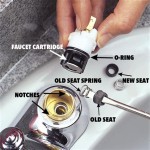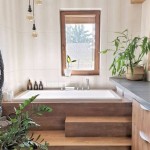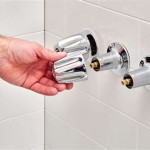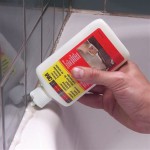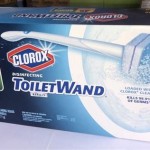Adhesive Ducks For Bathtub Walls: Exploring the World of Bath Time Fun and Practicality
Adhesive ducks for bathtub walls represent a multifaceted product category blending entertainment, functionality, and safety within the domestic environment. This seemingly simple item encompasses considerations spanning material science, child development, and even interior design. This article will delve into the various facets of adhesive bathtub ducks, exploring their composition, benefits, potential drawbacks, and best practices for selection and utilization.
The fundamental concept involves buoyant, typically rubber or plastic duck-shaped toys designed to adhere to the smooth, non-porous surfaces commonly found in bathrooms, particularly the tiled walls of bathtubs and showers. This adhesion is achieved through various mechanisms, most frequently suction cups integrated into the duck's design. These suction cups create a temporary vacuum between the duck and the wall, allowing the toy to remain in place until deliberately removed. The appeal of adhesive ducks lies in their ability to provide amusement for children during bath time, while simultaneously offering a practical means of storage and organization.
The proliferation of adhesive ducks for bathtub walls reflects a growing awareness of the importance of creating engaging and stimulating environments for children, even within the relatively mundane context of bathing. Furthermore, it acknowledges the often-limited storage space available in bathrooms, particularly in smaller homes and apartments. Consequently, these products offer a dual advantage: fostering imaginative play and maintaining a tidy and organized bathing area.
Understanding the Materials and Manufacturing Processes
The selection of materials plays a crucial role in the safety, durability, and overall usability of adhesive bathtub ducks. The most common materials include various types of plastics, such as PVC (polyvinyl chloride), polyethylene, and polypropylene. Rubber, both natural and synthetic, is also frequently employed, particularly for the suction cup components. Each material possesses distinct properties that influence its suitability for this application.
PVC, while relatively inexpensive and readily moldable, has faced scrutiny due to concerns about phthalates, chemicals used to soften the plastic. While regulations have restricted the use of certain phthalates in children's toys, it remains imperative to verify that any PVC-based bath toys are labeled as phthalate-free. Polyethylene and polypropylene are generally considered safer alternatives, being relatively inert and non-toxic. These plastics offer good durability and resistance to moisture, making them well-suited for the wet environment of a bathroom.
Rubber, particularly silicone rubber, is often preferred for the suction cups due to its flexibility and ability to create a strong seal on smooth surfaces. Natural rubber, while possessing excellent grip, can be prone to degradation over time, particularly with prolonged exposure to water and cleaning agents. Synthetic rubbers, such as neoprene and EPDM, offer improved resistance to these factors.
The manufacturing process typically involves injection molding, a technique where molten plastic or rubber is injected into a mold cavity. This allows for the creation of complex shapes and intricate details. The suction cups are often molded separately and then attached to the duck body using adhesives or mechanical fasteners. Quality control measures are essential to ensure that the suction cups are properly aligned and securely attached, as this directly impacts the toy's ability to adhere to the wall.
Increasingly, manufacturers are exploring the use of sustainable and eco-friendly materials in the production of bath toys. These include bio-based plastics derived from renewable resources, as well as recycled plastics. The adoption of these materials reflects a growing consumer demand for environmentally responsible products.
Benefits of Using Adhesive Ducks in Bath Time
Adhesive ducks and similar bath toys offer a range of benefits that extend beyond simple entertainment. These advantages touch upon child development, hygiene, and bathroom organization.
Firstly, they contribute to cognitive and motor skill development. The act of reaching for, grasping, and manipulating the ducks helps to refine fine motor skills and hand-eye coordination. Furthermore, the ducks can be used as tools for teaching basic concepts such as colors, numbers, and animal names. Parents can engage in interactive play, using the ducks to create simple games and narratives that stimulate a child's imagination and language skills.
Secondly, sticking the ducks to the wall and removing them helps children understand cause and effect. The tactile experience of the suction cups adhering to the smooth surface can be fascinating for young children, fostering a sense of curiosity and exploration. This seemingly simple activity can contribute to the development of spatial reasoning and problem-solving skills.
Thirdly, adhesive ducks promote a more enjoyable and less stressful bath time experience for both children and parents. By providing a source of distraction and entertainment, the ducks can help to alleviate anxiety and resistance to bathing. This can be particularly beneficial for children who are hesitant about water or have sensory sensitivities. A positive bath time experience can contribute to a child's overall well-being and emotional development.
From a practical standpoint, adhesive ducks provide a convenient and space-saving storage solution. By adhering to the wall, the ducks are kept off the floor and out of the way, reducing clutter and minimizing the risk of tripping hazards. This is particularly valuable in smaller bathrooms where storage space is limited.
Finally, the ability to easily remove and clean the ducks contributes to better hygiene. Regular cleaning helps to prevent the build-up of mold, mildew, and bacteria, which can thrive in the warm and humid environment of a bathroom. By keeping the ducks clean, parents can ensure that they are providing a safe and healthy play environment for their children.
Potential Drawbacks and Safety Considerations
Despite their numerous benefits, adhesive ducks for bathtub walls are not without potential drawbacks and safety considerations. It is crucial to be aware of these potential issues and to take appropriate precautions to minimize risks.
One primary concern is the potential for choking hazards, particularly with smaller ducks or those with detachable parts. Young children have a natural tendency to put objects in their mouths, and small parts can easily become dislodged and pose a choking risk. Parents should carefully inspect the ducks before each use to ensure that all parts are securely attached and that there are no signs of wear or damage. Ducks with small parts should be avoided for children under the age of three.
Another concern is the potential for mold and mildew growth. The warm and humid environment of a bathroom provides an ideal breeding ground for these organisms. While regular cleaning can help to prevent this, it is important to choose ducks that are easy to clean and that do not have intricate crevices where moisture can accumulate. Ducks made from materials that are resistant to mold and mildew are also preferable.
The adhesion mechanism itself can also pose a risk. Suction cups can sometimes detach unexpectedly, particularly if the wall surface is not perfectly smooth or if the suction cups are dirty or damaged. This can cause the ducks to fall, potentially injuring a child. Parents should regularly check the suction cups to ensure that they are clean and in good condition. They should also avoid placing the ducks in areas where a fall could cause a serious injury.
Furthermore, the materials used in the manufacturing of the ducks can be a source of concern. As mentioned earlier, some plastics may contain harmful chemicals, such as phthalates. It is essential to choose ducks that are labeled as phthalate-free and that meet all relevant safety standards. Parents should also be aware of the potential for allergic reactions to certain materials, such as latex. If a child has known allergies, it is important to choose ducks made from hypoallergenic materials.
Finally, it is important to supervise children closely during bath time, regardless of whether they are playing with adhesive ducks or other toys. Bath time can be a vulnerable period for children, and it is essential to ensure that they are never left unattended.
In summary, adhesive ducks for bathtub walls offer a blend of fun and practicality, but it is crucial to select products carefully, use them responsibly, and maintain vigilance to ensure the safety and well-being of children during bath time.

Slipx Solutions Duck Tub 5 Count 04100 1 The Home Depot

Slipx Solutions Duck Tub 5 Count 04100 1 The Home Depot

Non Slip For Duckling Bathtubs Ducks Stickers To Decorate Children S Bathrooms Shower Mat Norway

20pcs Bath Tub Stickers Non Adhesive Bathtub Decals Anti Kids Shower Safety Sea Animals Decal Bathroom Accessories Com

Non Slip Stickers Yellow Duck Shaped Bathroom Cute Anti Temu

Ducks And River Stone Self Adhesive Floor Mural Custom Sizes Availabl Maughon S

Slip X Solutions Tub Ducks For

Creative Tear Paper 3d Three Dimensional Cute Couple Duck Temu

Slipx Solutions Duck Tub Yellow Rubber Bathroom Non Slip Shower Mat Bath Toys

Anti Slip Bathroom Stickers Waterproof Adhesive Tape Child Duck Tomorrow Home Decor Yellow Bathtub Skid Com

